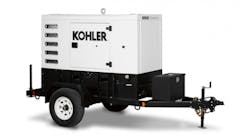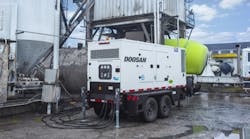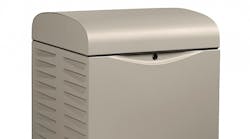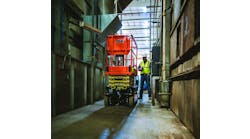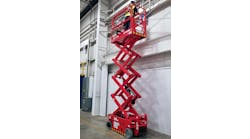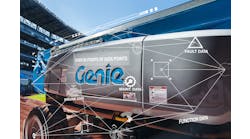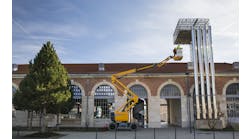Interviews with Generator Manufacturers: Control Interfaces are More Visual
Manny Rumao, marketing manager, portable products, Kohler Power Systems, talks about improvements in Tier 4 generators, the growth in propane power and other alternative fuels, and factors fueling the growth of the generator rental market.
RER: How have generators in general improved their performance, capability and functionality in recent years and what are some of the improvements you expect to see in the future?
Rumao: There have been significant improvements in the fuel efficiency and emissions of the engines powering generators. All new diesel engines must adhere to Tier 4 Final emissions standards, so engine manufacturers have made major design changes to achieve compliance. Control interfaces have also become much more visual, making the operation and monitoring of generators more intuitive than ever. Looking ahead, alternative fuels will continue to grow in demand as equipment operators look to run as efficiently and environmentally responsible as possible.
What is new in generator technology – both for your company and, in your opinion, in the generator industry as a whole?
We introduced our Tier 4 Final Kohler direct injection diesel engine in 2012 and we’re now using it on our new mobile generators, which are ideal for construction sites, remote power in the mining and gas industries, and other temporary power needs. Our Tier 4 Final diesel engine offers greater power density, quiet performance, and emissions compliance without the use of a diesel particulate filter, which decreases operating costs. Another example is in November 2013 at the Greenbuild trade show Kohler introduced the world’s first electronic fuel injected (closed-loop) 12.3 kW portable generator that saves up to 25 percent on fuel consumption and emissions compared to equivalent carbureted version. Other simple yet effective technologies are a built-in diagnostic system in the 12.3 kW while some of our other portable generators (3.7 to 7.5kW) have built-in maintenance minders so the rental yards don’t have to keep oil-change logs.
Additionally, our new Decision Maker 3500 controller offers a graphical interface with user-friendly displays and keypad functions, remote monitoring, and the capability to parallel two generators for greater power output.
The power generation rental market has been growing quite a bit, in the U.S. and globally. From your perspective, what are the factors that are driving this growth?
An uptick in non-residential construction as well as natural gas mining operations and shale exploration has certainly helped fuel much of the recent growth. Many of these mining sites are located in remote areas where utility power is not available or the utility can’t support all electrical needs. Another significant influencer has been natural event-related blackouts that create sudden demand spikes for temporary power. The value proposition for rental regarding lower cost of ownership has also translated to more companies looking to rent power rather than investing in the equipment themselves.
The propane-powered generator market has been developing in recent years. What are the benefits of propane-powered generators and what are the market segments for which it is most effective?
In addition to being more cost effective than diesel, liquid propane gas burns cleaner so propane-powered generators produce fewer toxins and less smog-producing carbon monoxide. Plus, propane flashes to vapor at atmospheric pressure, which reduces the risk of accidents from fuel spills.
Earlier this year, we launched an innovative line of gaseous-fueled mobile generators with on-board LP tanks. Users working in areas without an LP gas supply can utilize the on-board tank and then switch to an on-site supply when working in areas with an LP gas connection. The on-board LP tank is built for a 24-hour run time at 75 percent load while connection to an external LP or natural gas supply offers extended usage.
Propane is widely accepted in the residential heating and electrical market, and it has been used for years to fuel residential standby generators. So, we see it increasing in use as a fuel for portable and towable generators in a wide variety of markets including the construction, commercial, event rental and water utility segments. Unlike gasoline, propane does not have a shelf life and is a perfect fuel for seasonal applications where the equipment – and hence the fuel – doesn’t get used for more than 30 days.
For rental companies that are much involved in power-generation rental, what are some key tips that you can suggest to them about effectively serving this market?
Perhaps most importantly, make sure your equipment is easy to service and maintain. Our new mobile generators feature a patent-pending enclosure, which easily pulls off after removing some bolts, offering straightforward access to all parts without disconnecting any wires or additional parts. A fluid containment system is also integrated to collect any leaking engine fluid. Plus, all Kohler generators come with a standard three-year warranty managed through a service network of more than 10,000 dealers across the United States.
